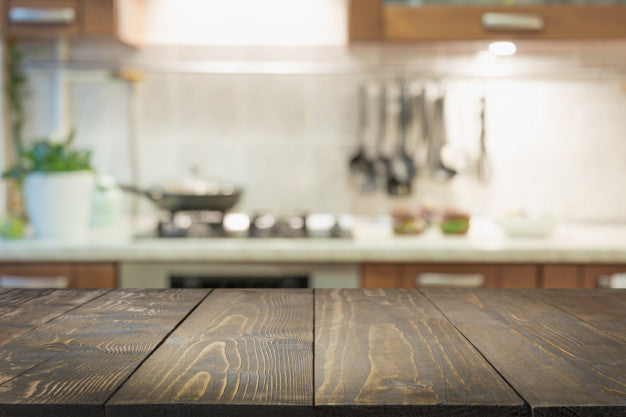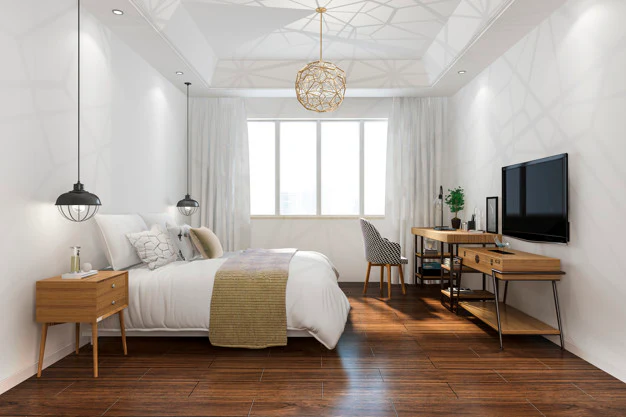
Pay Attention to These Factors when Buying a Dining Table for your Home
The dining table is probably the most used piece of furniture in a home. It is where you spend quality time with your family, not just enjoying delicious meals together, but also lingering over a cup of coffee or sweating together over a craft project. The familiar guests who come to your home are likely to be far more comfortable lounging around the dining table than sitting formally in the living room. Which is why, you need to pay the utmost care in choosing a dining table that is just right for your home. It should be large enough to accommodate family and guests but not so big that it takes over the space and décor of your home. Here are some useful tips to keep in mind while making this important choice for your living space.
Picking the right size
A dining table – especially a classic wooden dining table – is a substantial investment, and it is only natural to consider future needs when choosing one – how far your family is likely to grow, how often you may have stay-in guests, and whether you are likely to move to a bigger house at some point. Here’s an early hint - do not plan for more than three years ahead. Factoring in future needs right now may result in your buying a table that is far too big for your current space and requirements.
The primary consideration when choosing your dining table should be your lifestyle. You can always exchange your table for a bigger one at a later date if the need arises. But for now, here are some questions to ask yourself:
- How many people are likely to be sitting together at the table at least 5 times a week?
- What is the maximum amount of time you have spent at the table in the last week?
- What is the largest meal you have served on the table in the past month?
These answers will give you the right idea of how big your table should be.
If you are still confused, go by this rule of thumb - your table should be able to seat as many people as are living in the house at the moment. You are not expected to have a designated dining chair for every guest who comes to your house. It is perfectly fine to arrange temporary measures when having people over. Choose your size by the number of people, who actually use the table every day. This way, you will be able to find the one just right for your home.
In addition to the foot print of the table itself, you should ensure at least three feet of space around it, so that people can be seated comfortably, and there will still be space for people to move around.
Read - Find the Perfect Wooden Table for Your Home
Picking the right material
If you go by the ever-changing trends in interior décor, you may end up with a dining table that looks completely out of place in a year or two. A wise decision in this respect is to opt for a classic wooden dining table. In a store like Woodsala, you can find trendy as well as vintage designs that will go perfectly well with any aesthetic. Wood is also the most reliable material for strength and durability. Wood can be depended upon to survive the wear and tear of shifting houses and growing families too.
Dining tables are also available in other materials like metal with glass tops, wood or metal frames with veneer tops and in plastics or laminates.
Picking the right shape
Dining tables come in an amazing array of shapes and designs. Here is a quick look at some of the most popular shapes and designs.
The right shape for your room
The most common shapes for a dining table for homes or offices are square, rectangular, oval and circle. Free-form or unconventional shapes are also available, though they are less preferred.
For compact tables, a variety of shapes including polygonal are available on Woodsala. Circular tables are space-saving and add an element of charm to any space. For smaller spaces and smaller families, square tables are a great fit. Vintage designs and carved legs add a lot of character to small square tables.
For larger families and bigger dining rooms, rectangular tables are usually preferred as they can accommodate more people. Oval tables are great as 4 or 6 seaters.
In case you have a small space, but you regularly have guests over, opt for a table with additional leaves that can be folded in when not in use.
Read - 5 Interesting Ideas to Use an Angle Vintage Dining Table
Additional design elements to consider
In addition to the shape of the table, it is also essential to see the placement of the table legs or supports, the shape of the edges and the design of the apron or table skirt.
Legs
Pedestals attach to the centre of the table on a single support that branches out into legs at the bottom. This is usually seen in round tables and allow for easy placement of chairs.
The common 4-legged style has legs at the corners. It is convenient when you need to add additional chairs.
The trestle support has more bars or planks reinforcing the legs and has the visual impact, but is not convenient when you need to pull up an extra chair or two.
In classic wooden dining tables, the legs may be curved and have intricate carvings on them. In modern designs, the legs tend to be simple and thin.
Small, trendy tables may also sport a metallic rather than wooden frame to support the table.
Edges
The edges of a dining table may have sharp or curved design. Curved edges are suitable for homes with children or elderly family members. More ornate styles may also feature fancy edge shapes like the minaret style wave design you can find on Woodsala.
Apron
The apron or skirt of the table is the part of the frame right under the table top, and is often carved or patterned to add visual appeal. In minimalistic designs, they will appear plain and simple.
Whether you are choosing a dining table for your home or an office or hotel, all these factors need to be kept in mind. Pair your table with the perfect chairs and you have gifted yourself the perfect hang-out spot where you can spend quality time with your family and friends for a long time to come.
Read Also - Awesome Ideas to Decorate Your Dining Table



























